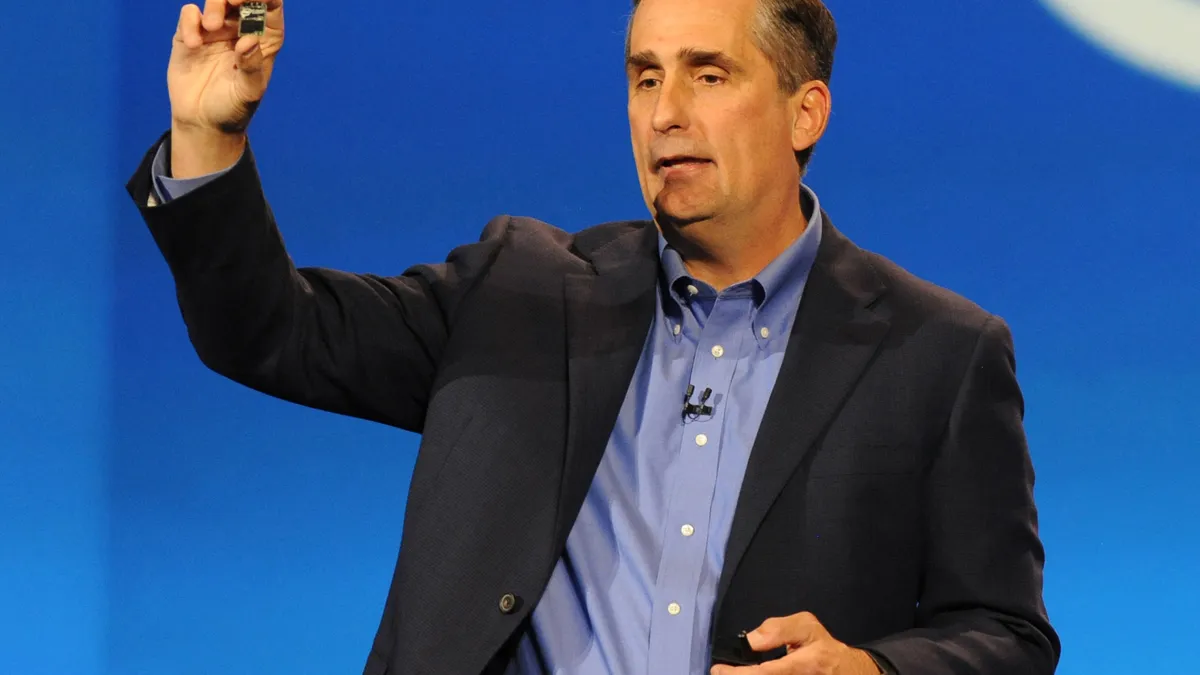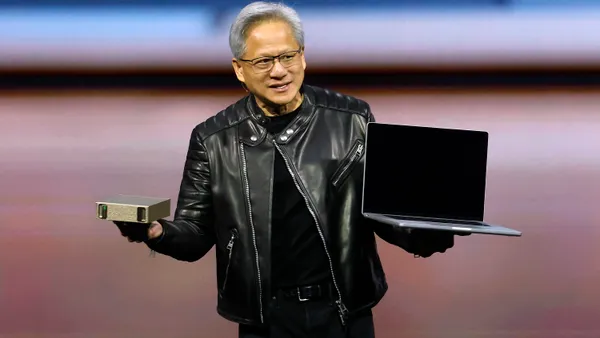Dive Brief:
-
Intel is celebrating its 50th year this summer and is reflecting on its foundations, including the persistence of Moore's Law. Prior to co-founding Intel, Gordon Moore projected that as integrated circuits were refined, the technology would grow in complexity and simultaneously drop in price, according to Intel. His prediction was that the number of components in microchips would double every year. While the rate of growth has changed over time, the underlying principles still persist as engineers continuously work to streamline technology.
-
"My real objective was to get the idea across, we have a technology that is going to make electronics cheap, but I didn't expect this binary order of magnitude [to] increase — a thousand-fold increase in complexity — to be very accurate," said Moore, in an interview published by Intel. "I just thought it was a general trend we were going to have. In fact, it was far more accurate than I could have anticipated."
-
Later dubbed Moore's Law, the technology industry has expanded the concept beyond the bounds of electronics, applying it to fields with near exponential growth. For Moore, the law has has a "lot more leg than that original paper had right to deserve."
Dive Insight:
With its advancements in semiconductors and microprocessors, Intel's technology underlies much of modern computing. Moore's Law is expanding beyond microchip bounds and could find a home in advanced technologies, such as artificial intelligence. For example, AI technology will continue to become more powerful but simultaneously become more accessible over time.
For some experts, the pace of Moore's Law is unsustainable — technology innovation cannot maintain an exponential pace, something which Intel's CEO Brian Krzanich has confirmed.
"Moore's Law is alive and well and flourishing," said Intel CEO Brian Krzanich, speaking at CES in 2017. But, it may take a little longer than originally projected he conceded. Rather than doubling every two years, computing power now doubles about every two-and-a-half years.
The principle is good for businesses and consumers. Everything bought today could be purchased in four years for the same price with twice as much performance. The concept underlies the tech refresh cycle, and has driven technology buying patterns.
So is Moore's Law really alive and well? Sort of.
"Moore's law isn't yet dead, but it's already not what Gordon Moore originally postulated," said John Parkinson, affiliate partner at Waterstone Management Group, in an email to CIO Dive. Transistor density has continued to increase, but it now takes two to three years to double, rather than 12 to 18 months as originally forecast.
One thing that has changed, in particular, cost per transistor is not going down anymore because process costs have increased, said Parkinson.














